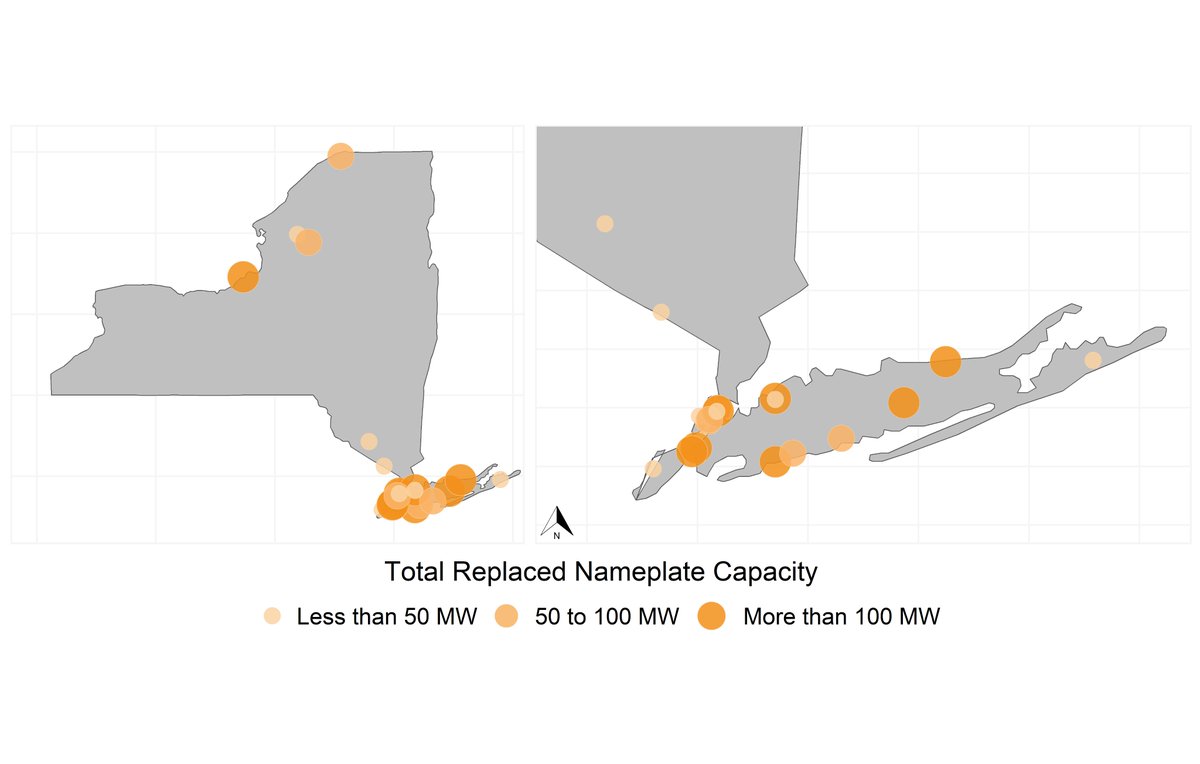 whoop whoop! thread alert!
whoop whoop! thread alert!
What will it take for #energystorage to replace fossil fuels?
A thread on @FormEnergyInc's recent white paper.
Here's a link to a short summary blog (full paper linked at the bottom). Read on for context and a summary! https://bit.ly/BigBatteries
There are seemingly contradictory answers to this Q.
On one hand, we see arguments that renewables + storage + other cleantech are already cheaper on average than fossils. So cheap, in fact, that a large fraction of plants are at risk of being stranded: https://rmi.org/insight/clean-energy-portfolios-pipelines-and-plants/
On one hand, we see arguments that renewables + storage + other cleantech are already cheaper on average than fossils. So cheap, in fact, that a large fraction of plants are at risk of being stranded: https://rmi.org/insight/clean-energy-portfolios-pipelines-and-plants/
On the other, we see arguments that a meaningful portion of the gas grid can't be retired today w/out threatening the grid's reliability or cost. These arguments aren't coming from a fossil fuel lobby. Its coming from folks like the CPUC, UCS, and E3:
https://www.ethree.com/wp-content/uploads/2019/03/E3_Resource_Adequacy_in_the_Pacific-Northwest_March_2019.pdf
https://www.ethree.com/wp-content/uploads/2019/03/E3_Resource_Adequacy_in_the_Pacific-Northwest_March_2019.pdf
What gives? How can renewables + storage be cheaper than fossil fuels but be too expensive to replace all fossil fuels?
The answer comes back to @JesseJenkins's insights about the need for firm, zero-carbon resources.
Simply put, average cost analyses ignore the operational intricacies of power systems, and, as a result, risk undervaluing firm, zero-carbon resources. https://www.sciencedirect.com/science/article/pii/S2542435118303866
Simply put, average cost analyses ignore the operational intricacies of power systems, and, as a result, risk undervaluing firm, zero-carbon resources. https://www.sciencedirect.com/science/article/pii/S2542435118303866
For example, more than 75% of the peakers in NY state operate for periods longer than 15 hours when dispatched, well beyond the 1-8 hour durations at which Li-ion batteries are most economical. Most of these peakers are in dense urban areas, & can't be co-located with renewables.
When E3 examined whether NY could replace the function of its peakers w/ storage, it found that only 6%-11% of NY's peakers could be replaced by 4-8 hour lithium ion systems, far from what's needed for NY to achieve its 2040 clean electricity targets: https://www.ethree.com/wp-content/uploads/2019/08/E3_The_Potential_for_Energy_Storage_to_Repower_or_Replace_Peaking_Units_in_New_York_State_July_2019.pdf
We wanted to build on this analysis, examining whether long duration storage (LODES) - like what @FormEnergyInc is building - could change this story. We examined whether LODES could economically match the unit-by-unit, hour-by-hour operations of NY’s peakers from 2010-2019.
The basic idea in our analysis is as follows: if NY's peakers are providing a reliability function, that function should show up in how these peakers have operated over the past 10 years. Can LODES provide this same fn. for lower cost than emissions regulation-compliant peakers?
We (conservatively) required storage alone to match the operations of NY's peakers, & ignored additional mkts & revenues.
We used Formware, Form's optimization software, to find the optimal combo of li-ion & LODES to match the peaker profiles.
Our results were promising...
We used Formware, Form's optimization software, to find the optimal combo of li-ion & LODES to match the peaker profiles.
Our results were promising...
1) Short and long duration storage can economically replace, one-for-one, up to 83% of NY’s peakers. A broader portfolio-level analysis inclusive of additional renewables and clean technologies could be used to identify paths to retiring all remaining peakers.
2) Replacing peakers w/ storage could reduce environmental burdens on vulnerable communities: LODES enables the economic replacement of 90% of the peakers in NY-defined environmental justice areas, enabling up to $360M in environmental and health savings to New York.
3) This high level of peaker replacement is only possible with long duration storage: Long duration storage enables the economic replacement of more than 4x more peakers than lithium ion alone.
This graphic plots the peakers we could economically replace by their longest operating time (y-axis) & avg. annual starts (x-axis). We found that Li-ion is only optimal for plants that don't have to run for very long or start very often (grey dots clustered in the bottom left).
However, adding LODES into the mix enabled the replacement of peakers that operated more frequently and for many more hours. Some peakers operate almost daily and are required to run for almost a week in some instances. We found that this was a job only LODES could perform.
We don't expect people to take our word for this. Rather, we hope people see the promise in our results and begin to perform their own analyses, incorporating LODES into their planning processes. Where these exercises uncover value, we hope to see LODES commercialization support.
You can read the full analysis here, where we dive into the challenge in much more detail and explore the environmental justice benefits of retiring dirty peakers: https://formenergy.com/wp-content/uploads/2020/08/Form_Energy_NYGasReplaceWhitePaper_V2.pdf
Of course, our analysis is just a starting point and is not without limitations: 1) We modeled a select set of aqueous air LODES technologies, not the full range. 2) We modeled historical operations as a proxy for grid needs; in reality these plants need to meet future grid needs
3) we didn't perform a full portfolio optimization, which could uncover additional paths to retiring the analyzed plants. 4) we didn't dig into the geophysical constraints that might impact how one sites storage.
Regardless, we hope you enjoy the analysis and look forward to the discussion.
ccing a handful of folks that might be interested: @ElephantEating (check out our really slow storage!) @duncan__c @cody_a_hill @JesseJenkins @atrembath @DanFinnFoley @SteveDavisUCI @KenCaldeira @alannogee ... I'm sure/ hopeful there are others. Apologies if I left anyone off!

 Read on Twitter
Read on Twitter




